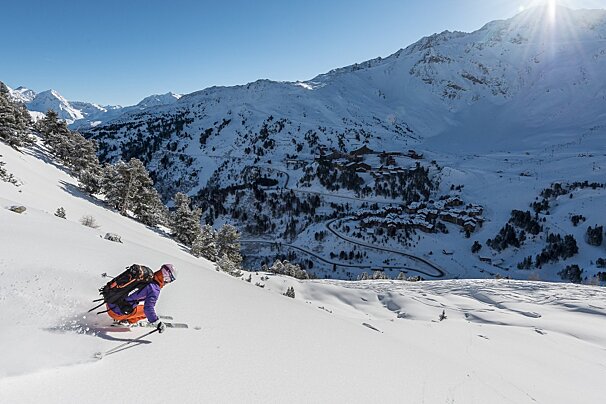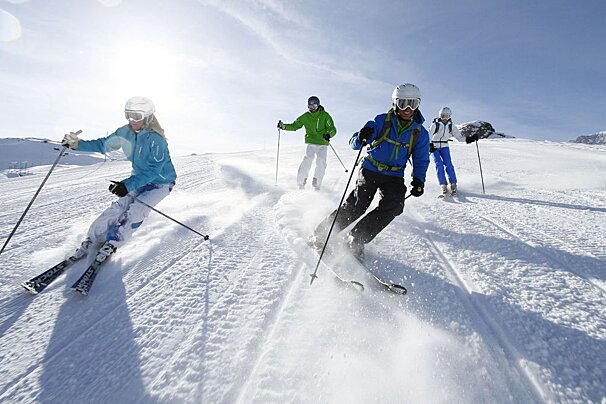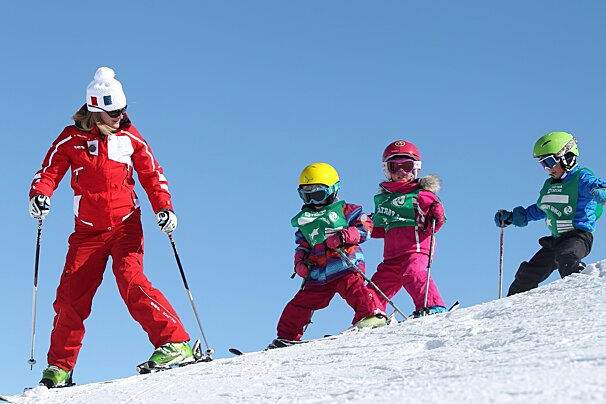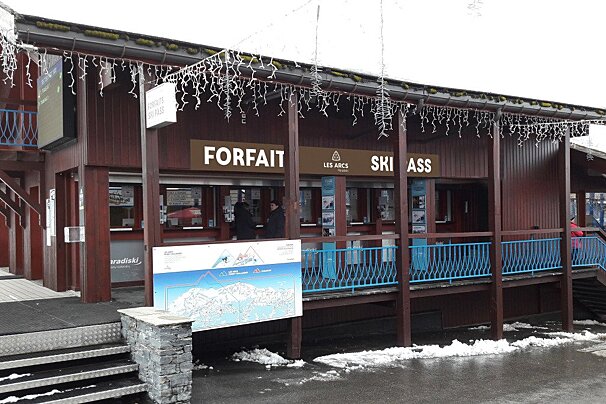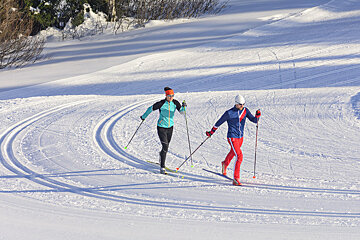
© Les Arcs OT

© Les Arcs Tourist Office
Cross-country skiing in Les Arcs
Discover the top Les Arcs nordic skiing
There are in the region of 453km of cross country skiing in the Paradiski area, which is no surprise in one of Europe's largest linked ski areas.
From conventional track-based cross-country skiing, skating or touring in the backcountry, there's something for everyone from beginners to experts. Both Les Arcs and La Plagne offer a number of different grades of marked cross-country skiing routes from greens and blues to reds and blacks where you can practise your technique.
Tracks are maintained for both the classic and skating styles, usually side by side on specially prepared pistes. These trails all operate on a one-way system (for obvious reasons), and you can buy a pass (if required - most are free) before setting out, usually from the lodges at the beginning of the trails. The trails are patrolled and it is likely that your pass will be spot-checked.
The pistes are generally open from 09:00 to 17:00 each day (snow cover permitting) and are maintained each evening. Walkers (and their dogs) are requested to keep to the marked pedestrian trails (which are free access) and not stray onto the marked ski trails.

Cross-country skiing in Les Arcs
Arc 1800
In Arc 1800 there is a 5km loop starting from the top of the Jardin Alpin chairlift.
Arc 2000
Approximately 600m from the centre of Arc 2000 there is another 5km loop, the trail begins near the bottom of the Arcabulle chairlift. Both pistes are free to use.
Bourg St Maurice
There is also a longer trail of 15km available down in Bourg St Maurice which can be accessed via the funicular from Arc 1600, although it's dependent on sufficient snow at this level (840m).
Peisey-Nancroix
For some truly spectacular cross-country skiing in a breathtaking landscape, you must head down the valley to the Nordic area of Peisey-Nancroix at Pont Baudin. Throughout the winter season there is a dedicated area boasting 44km of well kept trails. Situated on a vast plateau at the entrance of the Vanoise National Park, this beautiful setting also has facilities for practising biathlon, paths for walkers, snowshoe trails, toboggan routes and dog-sledding. In order to use the trails here you must purchase a pass (badge) from the centre's office before setting out, the profit from which goes towards the daily trail upkeep. Equipment for both the “classic” and “skating” styles of cross-country skiing are available to hire for as little as half a day. The Nordic area is accessible by free bus (Navette Gratuit) from Peisey village, which you can board at the bottom of the Lonzagne “lobster pot” lift.

Cross-country skiing in La Plagne
La Plagne is very popular with cross-country skiers as there is a variety of specialised tracks around the resort; the majority of the cross-country pistes are free of charge unless you want to cheat and get the odd lift here and there.
Montchavin/Les Coches
The only track that is not free is the Champagny track - the longest and hardest trail in resort that runs around the mountain from Les Bauches in the Montchavin/Les Coches area to Plagne Bellecôte. It bypasses just above the village of Les Coches, deep in the forest, and is a beautiful and peaceful track. At an altitude of just over 2,000m, good snow cover is guaranteed.
Plagne Soleil
There is shorter circuit above Plagne Soleil which is right in the midst of the downhill ski area and is graded as easy. Also an ‘easy’ route is the longer, slightly more downhill track from La Roche, below Plagne 1800, to just above Montalbert.
Montalbert
There are a couple more areas in Montalbert that are specifically for beginner cross-country skiers and are just small circuits to practise on.
Vallee de Bellecôte
If you have a car and wish to have a trip out for an afternoon’s cross-country skiing, then you can visit the beautiful Vallée de Bellecôte which separates La Plagne from Les Arcs. Drive as far as you can up the valley and right at the very end you come to the Nordic area of Peisey-Nancroix. Here you will find 44km of cross-country ski trails, a club house and café where you can hire equipment. The area can be affected by massive avalanches with snow falling from the North Face of the Bellecôte glacier and the villages up there are no longer inhabited all year round because of this. The destruction caused by the avalanches is very clear, with areas of flattened trees stretching for several hundred metres. It is, of course, well secured and is a very interesting and beautiful place to visit. In the Nordic area, a pass is required in order to use the trails, the profit from which goes towards their daily upkeep.
Once you have grasped the essentials, head off for the tranquil cross-country trails that criss-cross the Paradiski area.
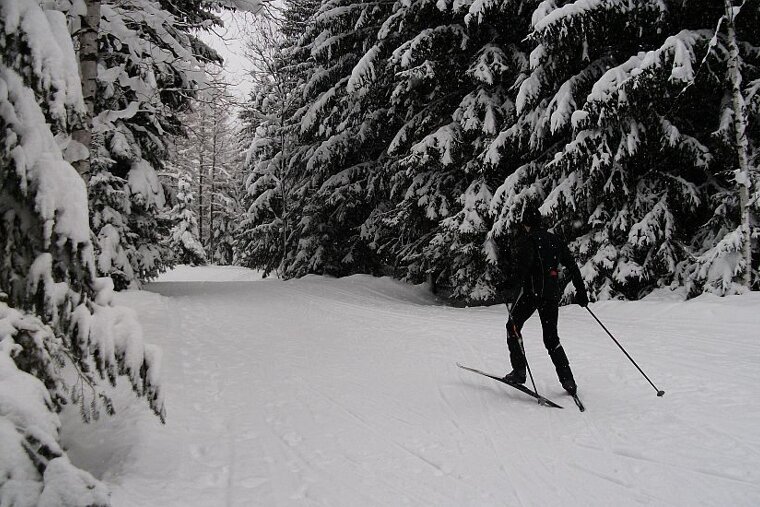
Book a cross-country ski lesson
Whilst cross-country skiing appears to be just walking, which it is on the flat and even on the uphill sections, going downhill is trickier than it looks. A lesson will provide you with the basic knowledge and skills that will allow you to tackle uphill sections and more importantly come back downhill nice and safely. You will learn the basic descending style of one ski in the pre-formed track and one as a snowplough type brake. Once you’ve mastered this try and ski downhill in a snowplough type position.
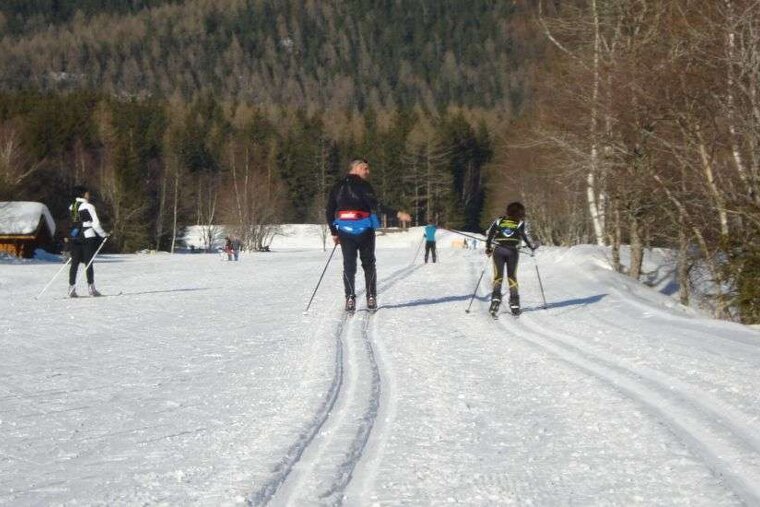
Cross-country skiing
What to wear
Many cross-country skiers you see in resort wear clothing more along the lines of cycling apparel rather than that of normal alpine skiers. It gets very warm cross-country skiing, so wear layers that can be removed as necessary.
Take a rucksack for your clothing and supplies, and don't forget some snacks and plenty of water. The “camelbak” type hydration backpacks are great for cross-country skiing, room for your layers and a drink combined as well. They also mean you can grab a drink without having to take your rucksack off and when you are drinking regularly this really helps. You will need around one litre of liquid for a three to four hour ski session. You can burn in the region of 1,500 calories in a two hour cross country session at fairly high intensity, so you will need to keep your energy levels up. Bananas are always a great snack when exercising, the slow release potassium really helps fight fatigue.
More fitted trousers will help with the technique of both classic and skating, less chafing as your legs move. Helmets generally aren’t worn but you may want a bobble hat or headband to keep your ears warm. Remember it gets really warm going uphill and cooler going downhill. Gym/cycling base layers are great if you have them or something with a wicking layer. The wicking fabric helps remove the sweat from your torso and keep it in the material itself which helps keep you cool when climbing and also stops you getting cold when descending.
Classic or skating style
As a beginner go for classic style, where you generally keep your skis in a straight line and it’s more of a walking style, this is the basic style to initially master. Once you’ve mastered classic style you may decide this is for you and continue with your development of the technique. Alternatively, you may decide to take up skating style, this is the more advanced technique that you see the biathletes using. It’s more advanced and requires a more technical skill set.
Top tip: To begin with stick with classic and see how you get on.
Skis and poles
There are different skis for classic and skating, so make sure you get the right skis for the type of skiing you are going to do. The skis are longer than normal alpine skis, somewhere between 95% and 105% of your height, the poles are much longer too (between chest and shoulder height in relation to your body) for pushing uphill, so don’t be tempted to try and use your normal alpine ski poles.
Most cross-country skis are “wax-less” as the traction for going uphill is provided by a “fish scale” type grip pattern on the central section on the bottom of the ski. If your skis don’t have a “grippy” section on the bottom you will need to wax them for traction, then you need to get the right wax.
Soft wax = more grip uphill, but slower downhill. Hard wax = less grip uphill, but quicker downhill.
Top tip: To begin with get skis with a “grippy” section to eliminate the wax issue.
Boots
Make sure your boots fit well, nice and snug. Cross-country ski boots are more like a hiking boot, in many ways similar to a winter ankle style cycling boot. Ensure they fit well as you are basically walking and jogging in them whilst skiing for several hours a day.
Hiring equipment
You can hire cross-country ski equipment from a number of ski hire shops in resort. Check in the shops for current prices.
More inspiration...
Find the cross-country ski maps for Les Arcs.
Take a look at this year's ski lift pass prices and if you're not sure which one to buy, read our guide for more information.


